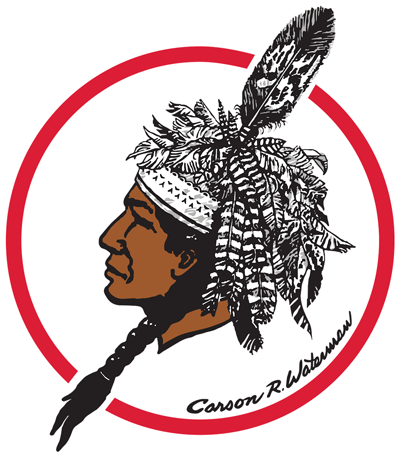SALAMANCA HIGH SCHOOL STUDENTS CREATE 3D PRINTED HISTORICAL ARTIFACT EXHIBIT
Students and faculty from Salamanca High School's 10th Grade class are working on a 3D-printed artifact exhibition, which will be on display in the Spring.
The aptly named "Atrocity Museum" will ask students to "research a terrible event in Global history, typically brushed over via footnote in the mainstream textbooks," said History teacher, Brooke Canale, as she carefully removed a student-designed artifact from a 3D printer in the school's Maker Space. "Students are then tasked to judge the credibility of information they find and create a historical exhibit, based on that research."
The integrative unit is a collaboration between Salamanca High School’s History, English, and STEM departments, designed to give students a chance to explore Global history through authentic museum exhibits they create. Cohorts are attached to a specific unit of study throughout the school year so that each group of classes will cover a different era.
According to district officials, cross-curricular platforms can give individuals a direct voice in their education, which in turn can have desirable impacts on engagement. "Modern learning is about developing critical thinking through different forms of communication," said STEAM Coordinator Aaron Straus, who is assisting faculty with the technical side of this initiative. "3D modeling and deliberation are tools that, when used properly, offer a literal voice to the historical lessons our political system too often neglects."
Side-by-side with History class, students create a historical fiction journal that can be related to the artifact and pen a historical fiction museum description for the artifact on display.
"We want to transform classrooms into engaging, technology infused environments. “Atrocity Museum” is collaborative, creative, and competitive. It allows students to acquire real life skills, while critically thinking about these historical events and how they relate to students’ lives today, ”said high school English teacher, Brandy Kinney. "Through creative writing and creating we can learn to reflect on the scope of History, English Literature, and current events."
Cohorts are assigned to a specific unit of study throughout the school year so that each group of classes will cover a different era studied in History and English Literature. Students also will have the opportunity to visit several museums dedicated to documenting historical atrocities, such as their recent trip to the Holocaust museum in Washington DC.
"The experience changed how I thought about the Holocaust," said high school Sophomore Michael Schnaufer. "I had read about it and know it was terrible, but then you research all their possessions, letters they've written to their loved ones, and the drawings of their children…it makes you think about how horrible and immense it was and look past the numbers in a typical textbook."
The project draws on Semiotics-Based Media Literacy Framework and other progressive teaching pedagogies from Dewey, Montessori, and Isaac. Still, Salamanca’s Canale & Kinney have added their own teaching experience and structure to these paradigms.
"We created a framework for this project, which we shared with other History and English teachers at the 2019 New York State Association for Computers and Technologies in Education (NYSCATE) conference. This framework allows student choice while focusing on different kinds of technology and multiple intelligences,” said Canale.
Students will present and discuss the issue with their peers and visiting community members during the cumulative museum exhibit and STEAM Fair. "I fabricated an ornate French royalty fork with broken and distorted tines," said a Salamanca student, who participated in the project. "This artifact represents the five-course tables lavishly draped with brocaded fabrics and gold and silver platters that French elites enjoyed, while many of their people starved right before the French Revolution."
"We're excited for young people to be engaged in these discussions in history. We know they want to have a voice when it comes to pressing issues, but they are rarely invited in," said Canale. "We don't want to wait till they are in college or community. We want them to develop these skills earlier."




